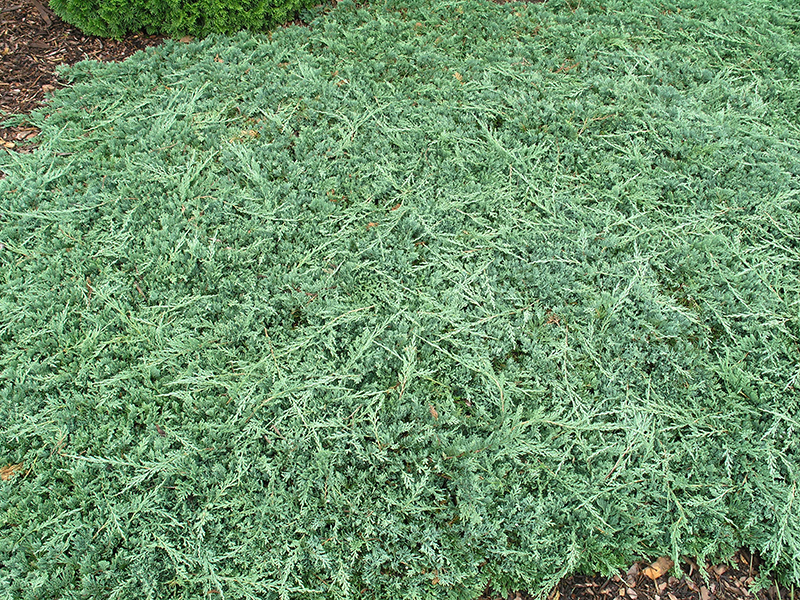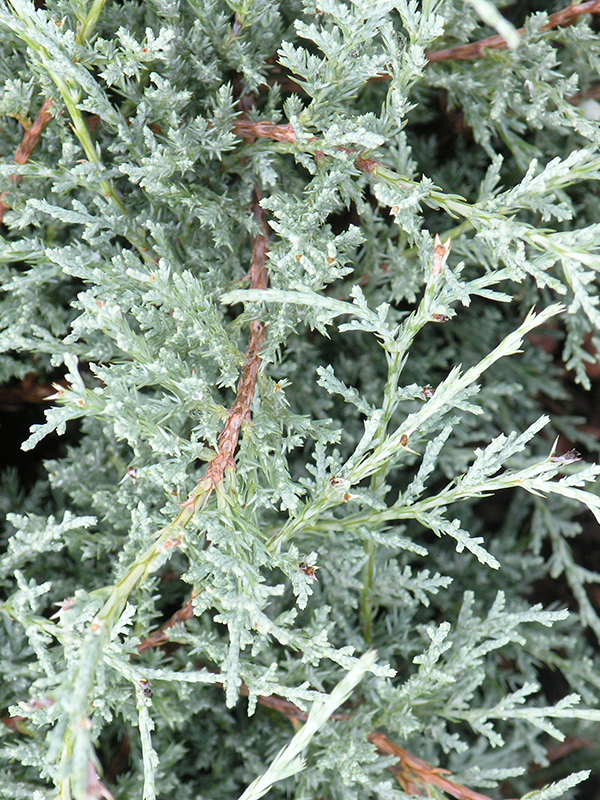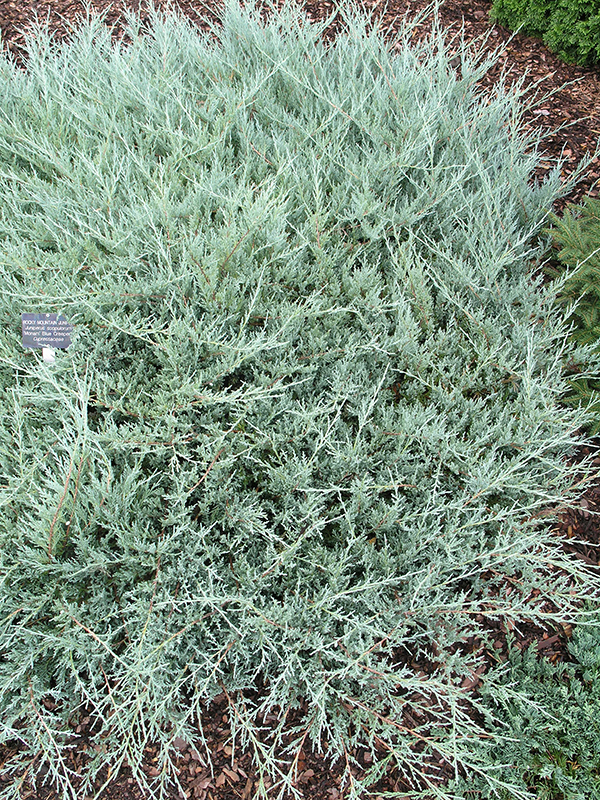
Woody > Juniperus > Juniperus scopulorum > Juniperus scopulorum 'Monam'
Juniperus scopulorum
'Monam'
Monam Rocky Mountain Juniper
Origin: The cultivar ‘Monam’ (PP 5,084) was discovered by Clayton Berg and developed by Monrovia Nurseries in Azusa, California, August 9, 1983.
Mike's
Opinion


"
Juniperus scopulorum is a low-growing spreading shrub or ground cover with valuable and useful characteristics. This North American cultivar is tolerant to cold, dry and hot weather conditions. An interesting flat-top form, requires little to no pruning, and little watering, making this shrub extremely low maintenance. This cultivar is known for its vivid steel-blue foliage that remains year round. The prickly nature of this shrub’s foliage repels deer and rabbits.
Michael Pascoe, NDP., ODH., CLT., MSc. (Plant Conservation)
"
| Family |
| Cupressaceae |
| Genus |
| Juniperus |
| Species |
| scopulorum |
| Cultivar |
| 'Monam' |
| Category |
| Woody |
| Type |
| Shrub (evergreen) |
| Patent Number |
| PP5,084 |
| Pronunciation |
| USDA Hardiness Zone |
| 3 |
| Canadian Hardiness Zone |
| 1 |
| RHS Hardiness Zone |
| H7 |
| Temperature (°C) |
| -40 -(-35) |
| Temperature (°F) |
| -40 -(30) |
| Height |
| 0.5 m |
| Spread |
| 2-2.5 m |
Photographs
Description and Growing Information
Flowering Period
| General Description |
| Versatile and resilient in any landscape, a unique flat or ‘table-topped’ ground cover or shrub. Maintaining this shape is not difficult as little pruning is required to maintain its form. |
| Landscape |
| Excellent as a border along driveways and walkways. Aids in erosion control on banks, cut slopes and sloping ground that result in runoff. Its spreading behaviour makes this an excellent addition to a rock garden. |
| Cultivation |
| Tolerant to most moisture conditions and pH levels with full sun to partial shade. Requires little, if any, watering, is cold tolerant, and will transplant without a problem in autumn. |
| Shape |
| Spreading, low growing, flat-topped and neat. |
| Growth |
| Slow |
| ID Characteristic |
| Attracts birds and is naturally deer and rabbit resistant due to its prickly leaves. Its foliage is a dramatic blue to silvery-blue colour year round. |
| Pests |
| Twig blight, cedar apple rust, and seiridium canker |
| Habitat |
| Horticultural origin. |
| Bark/Stem Description |
| The bark is red-brown in colour, with exfoliating characteristics. As the bark matures, it creates flat ridges and is imbricated along the stems. |
| Flower/Leaf Bud Description |
| The arrangement of the buds is continuous. They are of similar colour to the leaves, and therefore hard to identify. |
| Leaf Description |
| Monam’s leaves are less than 1 cm in length, simple scale or awl-shaped and sharp or prickly. The blue to silvery-blue leaves are alternately placed along the stems. |
| Flower Description |
| Flowers of this cultivar are monoecious. Staminate cones are papery, solitary at branch tips and are a yellow-brown colour. They are 2-4 mm in length. Ovulate cones are also solitary at branch tips, blue-purple or dark blue, berry-like and waxy. They are 4-7 mm in length. |
| Fruit Description |
| Blue berries, waxy and resinous, ovoid in shape and deeply pitted.. |
| Colour Description |
| Monam is known for its excellent blue foliage that maintains its beauty year-round and may even intensify during the winter months. The colour of the buds proves to be difficult to distinguish from its leaves. The fruit is a bluish colour and the bark of this plant is red-brown. |
| Texture Description |
| Leaves are fine in texture, and the bark is scale-like or rough to the touch. |
| Notable Specimens |
| Niagara Parks Botanical Gardens, Niagara Falls, Ontario, Canada. |
| Propagation |
| Propagated via semi-hardwood cuttings or simple layering. Simple layering consists of bending a flexible, low growing stem to the ground. A part of the stem must then be covered with soil, with 15-30 cm remaining above the soil. The tip should then be bent into a vertical position and staked. The bent part of the stem will often encourage rooting, but for added assistance, scarify this section. This process can be done using a dormant branch in early spring or with a mature branch in the summer. It could take one or more seasons until the layer is ready to be transplanted. Inspect root formation and ensue the layer has regular moisture. |
References


